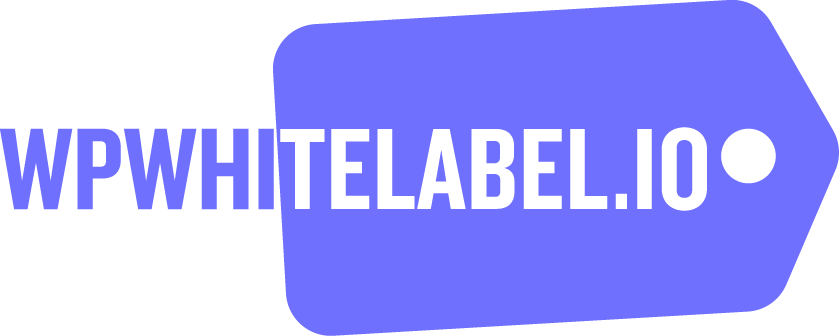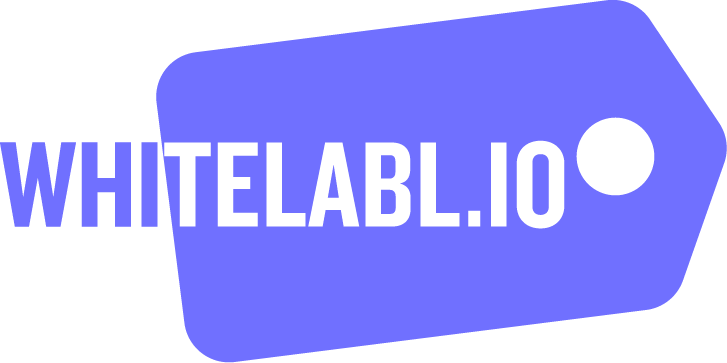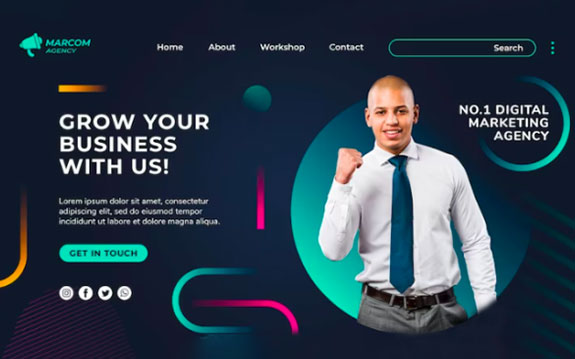Which website development approach is best for your business: DIY vs DIFM vs White Label website development? This article breaks down the pros and cons of each method, helping you make an informed decision that aligns with your budget, skill level, and business goals.
Key Takeaways
- DIY website development is cost-effective and offers full customization control, but it requires significant time and technical skills.
- DIFM website development provides a professional, hands-off approach handled by experts. This allows business owners to focus on core activities but results in less direct control.
- White label website development enables agencies to offer branded web services without in-house expertise, allowing rapid scalability and broad service offerings. However, partnering with the right white label service provider is essential to maintain quality.
1. What is DIY Website Development?
DIY website development is an approach where business owners utilize user-friendly platforms like WordPress to create and manage their websites independently. It empowers them to control website creation using pre-designed themes and templates, making it an appealing choice for small businesses with limited budgets.

Although this method allows extensive customization, it requires considerable time and effort. Typically, small businesses with 1-4 employees and an annual investment of around $2,500 into their online presence opt for DIY development.
These platforms offer tools for:
- Domain registration
- Hosting setup
- SSL certificate installation
- Website design and layout, including responsive design capabilities, color schemes, and typography options.
This method is ideal for those with more time than money and a preference for a hands-on approach.
Pros of DIY Website Development
The most significant advantage of DIY website development is its cost-effectiveness. Business owners can create a professional website tailored to their needs with minimal financial investment. This approach offers complete control over customization, allowing users to modify every aspect of their site. Additionally, it includes tools for monitoring and improving website performance, making it a flexible and budget-friendly option for small businesses.
Cons of DIY Website Development
Despite its advantages, DIY website development has notable drawbacks. The primary challenge is the limitation in advanced functionality and customization. Without technical expertise, scaling the website or adding complex features can be difficult. This can hinder the website’s performance and limit its potential to grow alongside the business. Moreover, managing and updating the site can be a significant challenge for busy business owners.
Read: Cost Comparison: In-House vs White Label WordPress Development
2. What is DIFM Website Development?
DIFM (Do It For Me) website development is a hands-off approach where businesses outsource the technical aspects of website creation to professionals. This method allows business owners to focus on their core activities while a dedicated team handles the website’s planning, development, and ongoing maintenance.
DIFM services ensure the website remains updated, secure, and optimized for performance, providing a hassle-free experience.
Those who prefer expert knowledge and aim for a professional-standard website will find this approach particularly beneficial. Agencies manage the entire process, from layout design to content creation, aligning the website with the company’s objectives and customer expectations. Simply put, professional web developers handle each aspect, delivering a polished final product.
Benefits of DIFM Website Development
A major benefit of DIFM website development is the creation of a professionally designed, mobile-friendly website. This approach enhances credibility and user engagement, which is crucial for establishing a solid online presence.
DIFM services offer:
- Time savings for business owners, allowing focus on strategic planning and customer relationships
- Simplified digital marketing efforts through expert management
- Ongoing support and maintenance.
Drawbacks of DIFM Website Development
A significant drawback of DIFM website development is the reduced control over the website’s performance and design. Since the project is managed externally, business owners may struggle to make quick changes or updates.
Know more: How White Label WordPress Development Helps Agencies Thrive
3. What is White Label Website Development?
White label website development allows marketing agencies to offer specialized web design and marketing services under their brand by partnering with third-party providers. This strategic approach enables agencies to quickly scale operations, saving time and resources.
By outsourcing development, agencies can expand their service offerings without needing an in-house team, making it a valuable option in a competitive market.
In this method, a third-party vendor like WP White Label creates a website that is rebranded and sold under the agency’s name. This approach, akin to ghostwriting, keeps the developer’s brand hidden, granting the agency full branding freedom. White label providers also offer ready-made solutions, support documents, and resources tailored to client needs.
Advantages of White Label Website Development
The primary advantage of white label website development is its scalability. Agencies can provide a wide range of services without in-house expertise, reducing time to market and enhancing service portfolios. This method provides access to on-demand expertise, allowing agencies to quickly meet client demands and maintain a competitive edge.
Challenges of White Label Website Development
Quality control can be a significant issue, and limited customization options may not always meet specific client needs. This is the reason why selecting a white label provider carefully is essential to ensure reliable, high-quality output for clients.
Learn: Why Choosing a White Label WordPress Agency is a Smart Move for Freelancers & Digital Agencies
4. Comparing DIY, DIFM, and White Label Website Development

This table provides a detailed summary of the key factors to consider when choosing between DIY, DIFM, and white label website development approaches.
| Factors | DIY Website Development | DIFM Website Development | White Label Website Development |
| Cost Comparison | DIY development is the most cost-effective option, but it demands significant time investment from business owners. | DIFM services offer professional quality and potentially higher ROI due to a reduced need for future fixes. | White label solutions are cost-effective for agencies who want to scale rapidly. |
| Customization and Control | DIY website development offers complete control over customization, allowing business owners to manage every aspect of their site. | DIFM services provide professional expertise but offer less direct control. | White label solutions offer a balance, allowing agencies to brand the final product as their own while relying on third-party expertise for development. |
| Time and Effort Required | DIY development demands substantial time and effort from business owners, as they have to handle every aspect of website creation. | DIFM services save time by handling all aspects of website creation, allowing business owners to focus on other tasks. | White label solutions reduce the time to market, allowing agencies to meet client demands quickly without extensive in-house development. |
| Technical Expertise Needed | DIY website development is best for individuals willing to learn and manage digital tools independently. | DIFM services require less technical expertise from the client, as professionals handle the technical aspects. | White label solutions also require less technical expertise from the client, relying on third-party professionals for development while allowing agencies to brand the product. |
5. Choosing the Right Approach for Your Business
The selection of the right website development approach hinges on multiple factors, including:
Assessing Your Needs
To assess your website development needs, you must define your goals, identify your target audience, and establish functional requirements. Conducting a thorough analysis can help clarify your website’s purpose and the specific features it needs to offer. This step is crucial in selecting the right development approach that aligns with your business objectives.
Matching Solutions to Goals
Matching the chosen website development approach to your business goals is essential for achieving the desired outcomes. Different approaches offer distinct benefits that can align with specific objectives, such as improving online visibility or enhancing user experience. For example, DIY may suit budget constraints, while DIFM offers professional quality and comprehensive support.
Making the Final Decision
Lastly, conducting a cost-benefit analysis and consulting with stakeholders can provide valuable insights, ensuring that the chosen approach meets the identified business needs and supports growth. It is also important to consider the long-term viability of the solution and its scalability.
Also read: How to Build a Successful White Label Partnership
7. Tips for Successful Website Development
To ensure successful website development, planning thoroughly, utilizing SEO best practices, and incorporating social media tools are crucial. These steps ensure the website is visually appealing, functional, and optimized for search engines, effectively engaging users and driving traffic.
Planning Your Website
Effective website planning involves:
- Defining the website’s purpose
- Identifying the target audience
- Determining key features
- Creating a sitemap
- Conducting a functional analysis to identify the best technical solutions
Thorough planning ensures the website aligns with business goals and provides a seamless user experience.
Leveraging SEO Best Practices
Adhering to SEO best practices enhances online visibility and boosts organic traffic. This includes optimizing site content, conducting keyword research, and optimizing meta tags. Utilizing built-in SEO tools and aligning content with user search behavior can also significantly improve search engine rankings and overall performance.
Integrating Social Media Tools
For enhanced customer engagement and increased traffic from various social platforms, integrate social media tools into your website. Embedding social media feeds helps keep content dynamic, while social sharing buttons encourage visitors to share your content. Additionally, placing social media links in prominent areas of your website ensures easy accessibility, further boosting your digital presence and online visibility.
Find out: How to Offer White Label WordPress Maintenance as an Agency
Summary
Choosing the best website development approach—whether DIY, DIFM, or white label—depends on your business’s unique needs, goals, and resources. Each method offers distinct advantages and challenges, from cost-effectiveness and control with DIY to professional quality and ease with DIFM, and scalability with white label solutions.
By assessing your needs, matching solutions to your goals, and making informed decisions, you can ensure your website effectively supports your business growth.
FAQs About DIY vs DIFM vs White Label Website Development
What is the main advantage of DIY website development?
The main advantage of DIY website development is its cost-effectiveness and the full control it offers over customization. It allows business owners to tailor their websites to their specific needs without significant financial investment, making it a practical option for many small businesses.
Why might a business choose DIFM website development over DIY?
A business might choose DIFM website development over DIY to leverage professional expertise, save time, and ensure a high-quality, responsive website without requiring technical skills or extensive involvement in the development process.
How does the cost of DIFM website development compare to DIY?
The cost of DIFM website development is typically higher than DIY because of the professional expertise involved. However, it can result in a higher return on investment by avoiding future costly corrections.
What factors should be considered when choosing a website development approach?
When choosing a website development approach, consider factors such as business goals, budget, customization, internal resources, and technical expertise required to align with your business objectives and growth.



